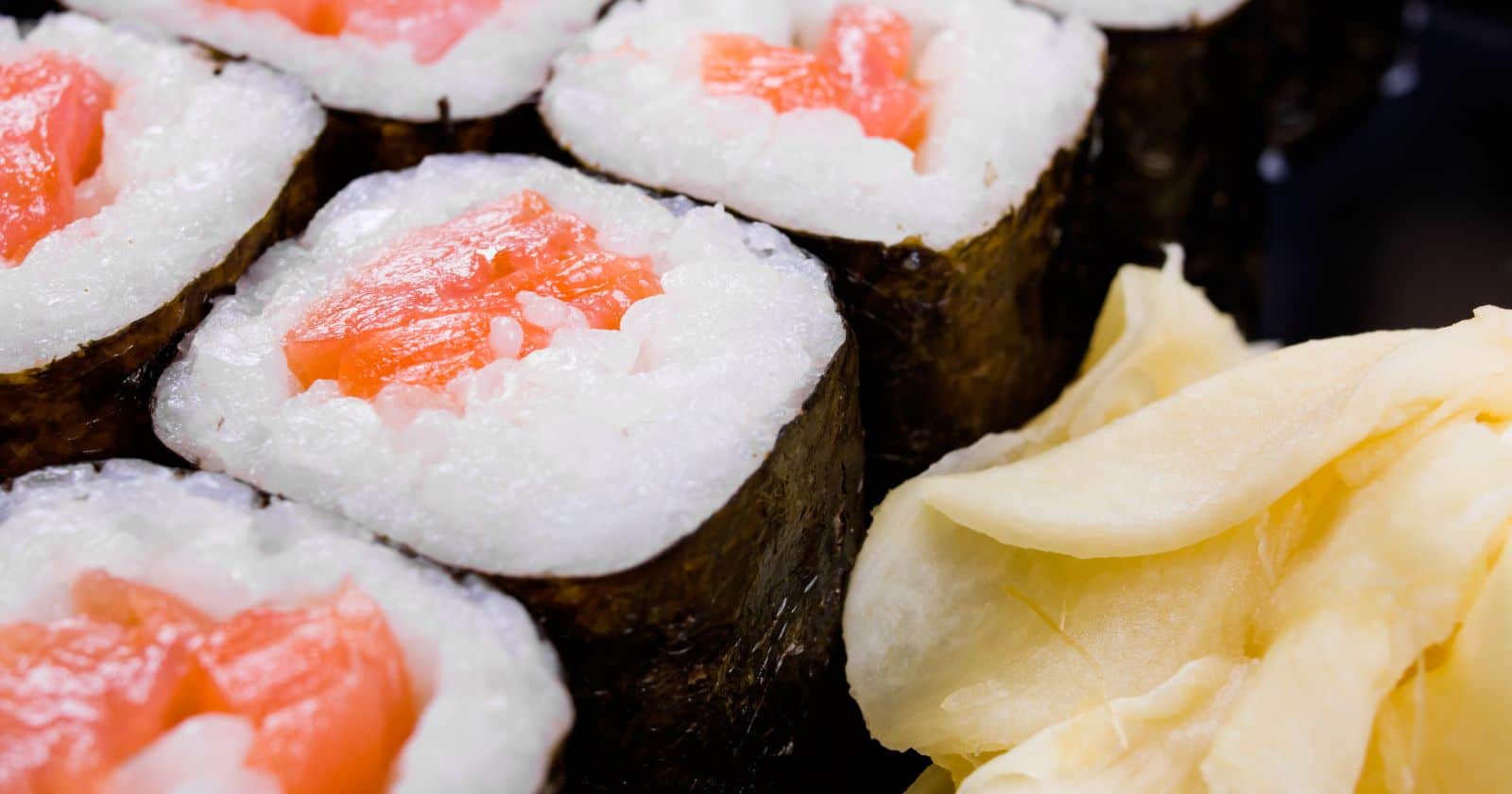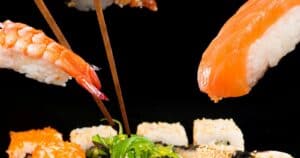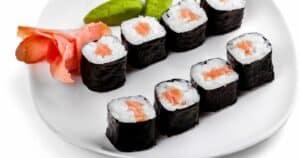Sushi lovers, have you ever wondered where your favorite roll originated? With sushi restaurants across Asia, it’s natural to ask – is sushi Japanese or Korean?
Well, the history of this vinegared rice delicacy is fascinating. While sushi has roots in China, the sushi we know today was developed in Japan over centuries. Its preparation evolved into an art form in Japanese culture.
Sushi’s origins can be traced back to 4th century China. Fermented rice and fish dishes then spread through Southeast Asia. In 8th century Japan, these dishes were refined into the sushi we recognize now. While enjoying global fame today, sushi remains an icon of Japanese cuisine.
Curious to learn more about sushi’s geographical journey? Stick with me as I detail sushi’s path from China to iconic Japanese dish. I’ll share key moments that shaped sushi’s development in Japan. You’ll see why this delicious dining experience is quintessentially Japanese.
Sushi’s Early Beginnings in China and Southeast Asia
Sushi’s origins start not in Japan, but in 4th century China. Fishermen along the Mekong River would create fermented fish and rice mixtures as a way to preserve fresh fish. This early sushi predecessor was called “narezushi.”
Narezushi was made by:
- Coating fish in salt and allowing it to ferment for months
- Binding the fish with cooked rice
- Allowing the rice to ferment further
This fermentation process both preserved the fish and enhanced its flavor. Narezushi then spread through Southeast Asia as a way to prevent fish spoilage for inland regions.
Already, the core components of rice and fish were forming what would become sushi. But narezushi itself bears little resemblance to today’s sushi – it was uncooked and heavily fermented. Sushi as we know it would take shape in Japan.
Sushi Comes to Japan in the 8th Century
Narezushi first made its way to Japan from southern China around the 8th century AD. The Japanese began experimenting with the dish, creating a style called “seisei-zushi.”
Seisei-zushi involved:
- Lightly salting fish instead of heavy fermentation
- Partially cooking rice before mixing with fish
- Pressing the fish and rice into shape with wooden molds
This early sushi style was faster, lighter, and more palatable than China’s narezushi. But raw fish was still not common. The rice helped preserve the cooked fish.
Over the next centuries, sushi continued to develop regionally in Japan. But a major turning point came in the early 1800s in Edo (now Tokyo).
Sushi Comes into Its Own in the 1800s
In 19th century Edo, street stalls called “yatai” began selling fast food oshi-zushi – compressed sushi. Vendors would:
- Prepare fresh fish daily rather than preserving it
- Use vinegar-seasoned rice to complement the taste
- Press rice and fish into wooden molds for easy eating
This fast street food took off, feeding hungry Edo residents on the go. Sushi was transitioning from fermented preservation to fresh preparation.
Another pivotal innovation came along – nori seaweed. Wrapping sushi rice and fillings in crisp nori transformed sushi aesthetically and texturally. This “maki-zushi” rolled sushi remains perhaps the most popular globally today.
Sushi Spreads Beyond Japan
By the late 1900s, sushi had been established as both street food and high-end dining in Japan for over a century. But it was still largely unknown beyond Japan’s borders.
Sushi originated in Japan, but its global fame came from Japanese ingredients winning over international palates. Key moments included:
- 1966 – A sushi exhibit at a Paris food fair introduced many Europeans to sushi.
- 1970s – Some sushi chefs brought their skills to LA, sparking the spread of sushi restaurants.
- 1980s – The invention of the California roll with avocado brought non-seafood lovers aboard the sushi train.
Today, sushi is adored worldwide as a hallmark of Japanese cuisine. While sushi has been embraced by other Asian countries like Korea, its origins and evolution are distinctly Japanese.
The Takeaway: Sushi is a Japanese Culinary Tradition
So to answer the original question – is sushi Japanese or Korean? While both cuisines have embraced sushi, the origins clearly trace back centuries in Japan. The sushi we love today grew out of Japanese culture and innovation.
From early fermented narezushi to pressed Edo-era oshi-zushi to nori-wrapped rolls, each stage of sushi’s development happened in Japan. The Japanese refined and personalized each sushi style over time.
Korea and China have their own sushi subcultures today. But the quintessential image of sushi across the globe is based on Japanese sushi traditions. Japan is where sushi was born and raised over the centuries.
So next time you enjoy a tekkamaki or spicy tuna roll, you can thank centuries of Japanese chefs. Sushi is now a global treasure, but maintains its Japanese heart.





